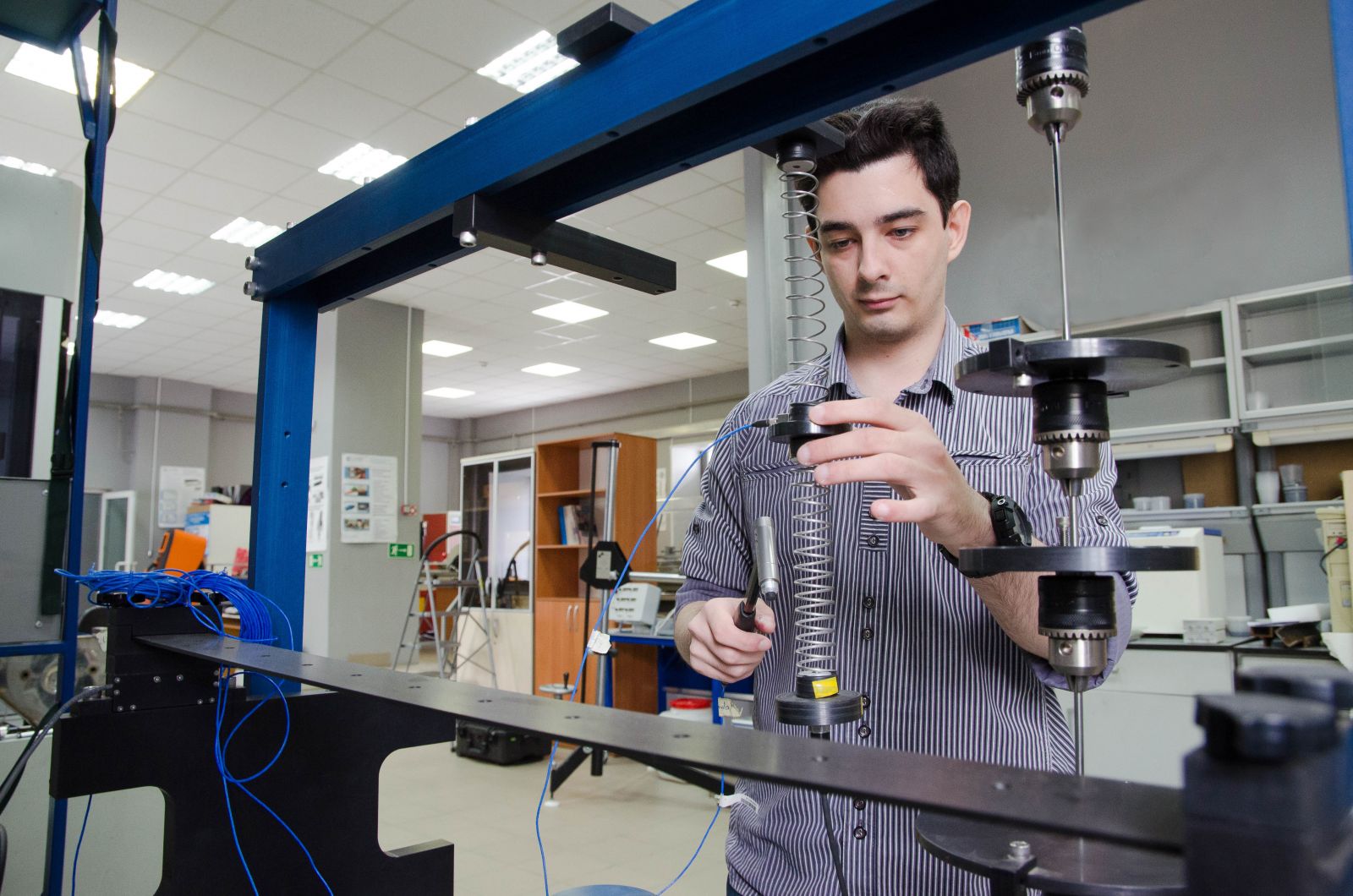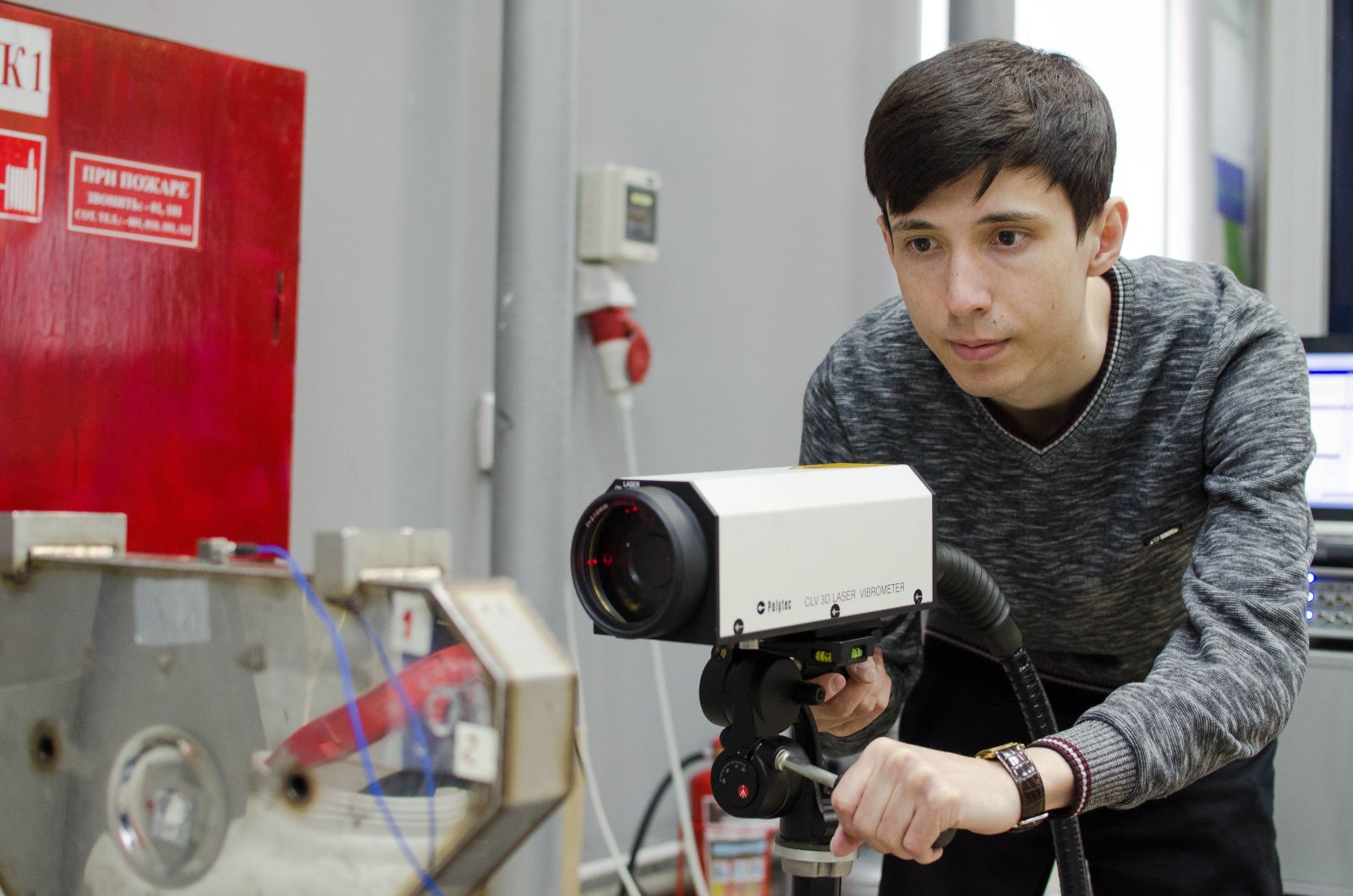The Laboratory of Experimental Mechanics, which today is a part of the Public Research Institute for Test Mechanical Engineering, was established in South Ural State University in 2013. The laboratory helps SUSU scientists to solve scientific and research problems, and also conducts complex tests for industrial enterprises of the Chelyabinsk region and Russia.
The Head of the Laboratory of Experimental Mechanics is Pavel Taranenko, Candidate of Engineering Sciences, associate professor of the Engineering Mechanics Department of SUSU’s Polytechnic Institute. The laboratory is based on advanced testing equipment and software purchased upon the National Research University program and the national project Education, which allows solving complex scientific and practical problems.

“In our laboratory we conduct mechanical tests of materials and structure elements. Before, when we didn’t have the experimental equipment, we could only estimate the dynamics and strength of structures by calculation. And now, thanks to the new equipment, we can not only perform calculation of a structure, but also confirm it with experimental results and construct a calculation model verified by the experimental results and which is very close to the real product. The Heart of our laboratory is the unique design and experimental LMS complex (Belgium),” says Pavel Taranenko.
The LMS complex is a measuring system which can connect with a wide variety of sensors, and simultaneously gather information on accelerations, deformations, temperatures, sound pressures, and electrical signals via 96 channels. For the laboratory scientists, the results of these experiments are the starting point for determining the condition of a structure. With the use of this measuring system, it is possible to obtain the experimental results and compare them to the calculation model.
.jpg)
“In our laboratory there are vibration platform machines meant for the standard vibration tests. For example, we can check whether the product remains undamaged when it is transported by train. The device is packed inside the transport package; we put it on the vibration platform and begin to excite random, shock or sinusoidal vibrations, as if it was really transported by train. In our laboratory we can simulate practically any type of external vibration impact,” – explains the Head of the laboratory.
The Laboratory of Experimental Mechanics takes an active part in the project named “Development of domestic mass Coriolis flowmeter for the oil and gas industry with the function of measuring the capacity of multiphase flows” (scientific advisor: prof., Doctor of Technical Sciences A.L. Shestakov), on which scientists from several SUSU divisions are working within the framework of the Federal Targeted Program for Research and Development. The work started in the last year’s autumn; Chelyabinsk company ElMetro Group has become the industrial partner. The scientific and research work is targeted at improving the enterprise's products, namely the Coriolis flowmeters.
“I can say that this work would be impossible without the equipment that we have now, says Pavel Taranenko. Up-to-date software, highly accurate measuring system and highly sensitive laser vibrometer make it possible to obtain experimental data on the oscillations of the measuring tubes that are inside the flowmeter box. Thanks to the excellent equipment of the laboratory and modern high-tech equipment, we have every opportunity for performing unique operations, both calculated and experimental.”
The research on the flowmeters is carried out in cooperation with the international scientific Laboratory for Self-Monitoring and Self-Validating Sensors and Systems, which was established at SUSU within the framework of Project 5-100, and the Head of which is the invited professor of Oxford University, Manus Henry.
“Manus Henry is one of the world’s best specialists on such kind of structures. Therefore, without a doubt, this work is our first priority, and the development of our laboratory happens due to its implementation. In January of this year he came to our University and delivered lections. We had an opportunity to discuss the direction of our work. Yet on April, during the return visit to Oxford, the rector of SUSU Alexander Shestakov and professor Manus Henry reached an agreement on academic exchange between students of SUSU and students and postgraduates from Oxford,” says the Head of the Laboratory of Experimental Mechanics.
Scientists of the Laboratory of Experimental Mechanics are mainly students and postgraduates of SUSU. Thanks to the modern equipment of the laboratory, they perform scientific and research activity and frequently publish the results of their research in many Russian and international journals, including the Top 10% journals according to Scopus and Web of Science databases. On the research conducted in the laboratory, 4 Master’s dissertations are to be defended in June of this year. It is planned, that after the defense, the postgraduate masters will continue their postgraduate studies, which is to be done in cooperation with industrial partners of the laboratory, among which are ElMetro Group LLC, SDB Turbina, FGUP Oktyabr Production Association (Kamensk-Uralskiy), Kopeysk Machine-Building Plant, and others.

“Not everybody has the equipment that we have. By conducting unique experiments and scientific development, we implement new technology at enterprises, implement new calculation and design methods. This happens thanks to the Project 5-100, to the National project Education, to the National Research University Program, and is very important for the development of science and industry of our region,” affirms Pavel Alexandrovich.
Pavel Taranenko is planning to accredit the division as a testing laboratory, which will allow which will allow him to obtain the right to conduct mechanical tests and officially recognize the quality and competence of the research carried out at the Laboratory of Experimental Mechanics.




